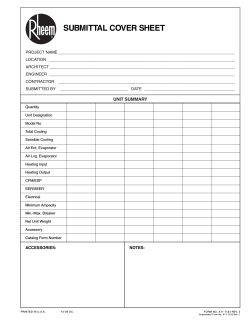
Magnetic lines of force convey a far better and purer
Magnetic lines of force convey a far better and purer idea than the phrase magnetic current or magnetic flood: it avoids the assumption of a current or of two currents and also of fluids or a fluid, yet conveys a full and useful pictorial idea to the mind. Michael Faraday Arizona State University SES 194 Energy in Everyday Life Generators and Motors Frank Timmes ftimmes@asu.edu Since an electric current can create a magnet, it was inevitable that someone would see if a magnet can create a current. In 1831, Michael Faraday found that a magnet moving through a coil wire will start a current flowing in the wire. When the magnet moves into the coil one way, current flows in one direction. If the magnet stops inside the coil, the current stops. When the magnet is withdrawn, the current flows in the opposite direction. Thus one key to generating a current using a magnet is simply to have the magnet move. We can also generate a current by moving the coil while we keep the magnets stationary. N S Current N S Magnetic Field Its only necessary to that the magnet and coil move with respect to each other to start the current flow. When the coil is is perpendicular to the faces of the magnets, zero magnetic field lines penetrate the coil. N S Current N S Magnetic Field When we turn the coil from perpendicular to parallel, we increase the number of field lines going through the plane of the coil. But a changing magnetic field produces a current. We can create a current by simply turning a coil! This is the essence of an electric generator. In a power plant, the coil between the magnets is turned by air going through a turbine (wind power), water falling through a turbine (hydroelectic) or by steam from a boiler going through a turbine. V,I direct time alternating As the power plant’s coil rotates, the charges move back and forth, producing AC power. The same process, in reverse, produces rotational energy from the flow of electrical energy. This is the essence of a electric motor.
© Copyright 2025





















